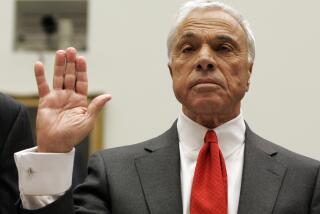Commercial Borrowers Will Find More Support This Year
Borrowers looking for commercial real estate loans can expect an altered lending climate in 1999, in large part because of the August collapse of the commercial mortgage-backed securities market.
Experts say the climate will remain cooler than it was during the superheated first half of 1998, when funding flowed freely as CMBS lenders competed aggressively to make loans. But it will grow noticeably warmer than it was during the last part of last year, when the CMBS market’s collapse cut off financing for countless borrowers who were depending on CMBS loans.
CMBS lenders are firms that package their loans into large pools and then sell bonds backed by those pools of mortgages. The mortgage payments from borrowers provide the cash flow to, in turn, pay the interest due to bondholders.
CMBS financing has become one of the most popular forms of real estate borrowing, accounting for about half of all commercial real estate lending during 1998.
Whether CMBS lenders can hold on to that much of the market in 1999 is doubtful, analysts say, but they agree the CMBS market is recovering and will continue to improve during 1999. That means many borrowers in the so-called middle market--seeking loans of about $5 million to $20 million--will once again be able to count on CMBS financing.
Borrowers who can’t or don’t want to seek CMBS financing may be able to arrange loans through banks and life insurance companies, which have already stepped in to fill some of the void left by the CMBS collapse. Analysts say these other lenders will become more aggressive in a bid to recapture some of the market share they have lost to CMBS lenders in recent years.
A Los Angeles attorney who specializes in real estate finance, Adam Weissburg of Cox, Castle & Nicholson, expects a more mature, more disciplined CMBS market to emerge in 1999 as a result of what is sometimes referred to as the “August meltdown” of last year.
“I’m not going to say that what happened in August is a good thing, but it’s an important step for the market to mature,” Weissburg said. “I think there will be more discipline in the market in 1999.”
Weissburg will address the CMBS market and other facets of finance Wednesday and Thursday at a UCLA Extension forecast titled “Taking the Fast Track in 1999: The New Year Real Estate Forecast.” He said the theme for his remarks will be “Out of Chaos Comes Order.”
“CMBS lenders are going to become disciplined. They are going to understand the risks and price the loans more appropriately,” Weissburg said. He explained that CMBS lenders, in their zeal to compete, charged their borrowers interest rates that turned out to be too low to make a profit when the market sank in August.
Besides being more careful about pricing, Weissburg believes CMBS lenders may reduce their loan-to-value ratios, meaning borrowers may either have to put more equity into deals or find other sources of financing for the portion no longer provided by CMBS lenders.
“You’ll see new lenders coming in and charging significantly higher rates for the 10% of equity or whatever portion it happens to be that CMBS won’t lend on any more,” Weissburg said.
One major challenge for the CMBS industry, according to Los Angeles-based real estate finance advisor Brian Foster, will be repairing its tarnished image among borrowers who didn’t get loans they had been promised when the lenders ran into trouble in August.
“When CMBS lenders determined that they were facing a loss, many borrowers with formal commitment letters were told to go find another capital source, and their commitments were not honored,” Foster said. “This is the most damaging effect of the summer meltdown.”
Foster said a few CMBS lenders honored their commitments to borrowers, even though it meant losing money, while some others backed out of the loans but paid borrowers the industry standard penalty of 1% for failure to deliver the loan. But many lenders simply backed out of the loans, he said.
Borrowers and lenders will struggle this year to solve problems that stem in part from the differences between CMBS lenders and conventional banks.
In a traditional banking relationship, the lender holds on to the mortgage and has the authority to renegotiate terms of the loan or extend the payment deadline if the borrower encounters problems. In a CMBS relationship, the lender holds on to the loan only briefly before placing it in a large pool of similar loans and selling that pool in the form of a bond. Once the loan pool has been converted into a bond and sold, the CMBS lender no longer owns the loan and therefore can’t renegotiate terms.
“The traditional view of conventional lending was that you’ve got a banker and you’ve got a borrower, and if something goes wrong, the banker and the borrower get together and fix it. CMBS lending has changed that relationship,” Weissburg said.
Even if a CMBS lender still holds a loan and has not yet packaged it as a bond, Weissburg said, CMBS lenders are loath to grant payment extensions or renegotiate terms because their stated business purpose is to dispose of the loans in the form of bonds, not hold on to them as a bank would.
Weissburg said the meltdown, combined with the vagaries of commercial real estate, created unexpected problems for CMBS lenders and their borrowers.
Many CMBS originators were forced to hold on to their loans when demand for their bonds dropped off. These lenders now are holding loans to borrowers who are unable to make payments on time because they have been unable to complete deals or projects.
“A lot of developers had projects they wanted to do that they expected would be fully leased or sold by now,” Weissburg said. “A lot of remodeling projects, re-leasing, renovating and other projects didn’t get completed as quickly as anticipated.”
Borrowers’ problems were aggravated when real estate investment trusts slowed their pace of acquisitions in 1998, Weissburg said. Many of the borrowers were counting on REITs to buy their properties--an “exit strategy” that would allow them to repay their loans, he said.
According to Foster, a paradox of last year’s CMBS meltdown was that it had nothing to do with real estate--it was a result of problems in the worldwide credit markets.
In oversimplified terms, what happened in August was that the CMBS lenders had assembled their pools of loans with the expectation that they would sell the resulting bonds at certain prices. But bond buyers, suddenly skittish because of worries about Asian and Russian economic problems, wouldn’t pay those prices. So the CMBS originators had to sell the bonds for lower prices, which wiped out their profits and resulted in huge losses for the lenders. Some of the biggest players in the CMBS market went out of business.
What happened in August should be a warning to CMBS lenders to tread more carefully this year, said Sanford R. Goodkin of San Diego-based Sanford R. Goodkin & Associates, a real estate consulting firm.
“There is no assurance that some other country isn’t going to collapse, and that should make the decision makers much more sensitive to the possibility of these things occurring. It doesn’t put [CMBS lenders] out of business. It just means they should think about ‘what-if’ situations in the global economy,” Goodkin said.
According to Foster, questions for the CMBS industry in 1999 include: How much will the market recover? How will the lenders cope with their problem loans? And how aggressively will other types of lenders compete?
“I think the CMBS market is crawling back. I don’t think it will be back to the high it reached around June of 1998 for at least another year,” Foster said. He estimated CMBS lending will represent no more than 30% of commercial real estate financing this year, still a large portion of the lending pie for an industry that got its start just over five years ago.
More to Read
Inside the business of entertainment
The Wide Shot brings you news, analysis and insights on everything from streaming wars to production — and what it all means for the future.
You may occasionally receive promotional content from the Los Angeles Times.









